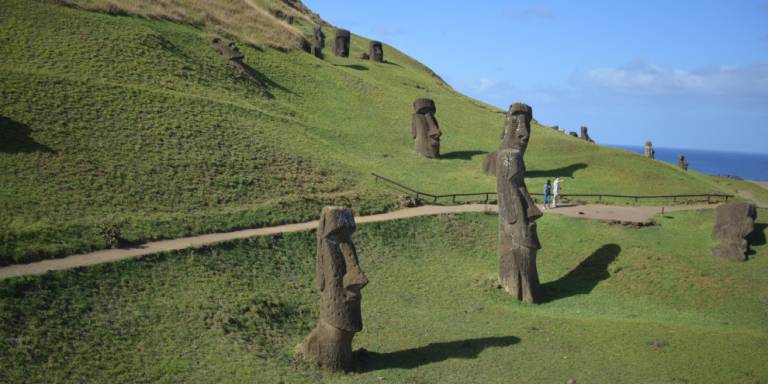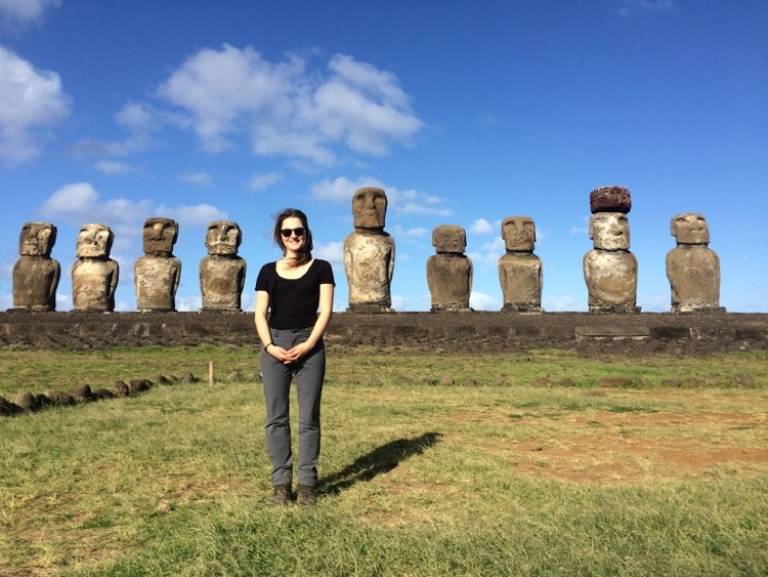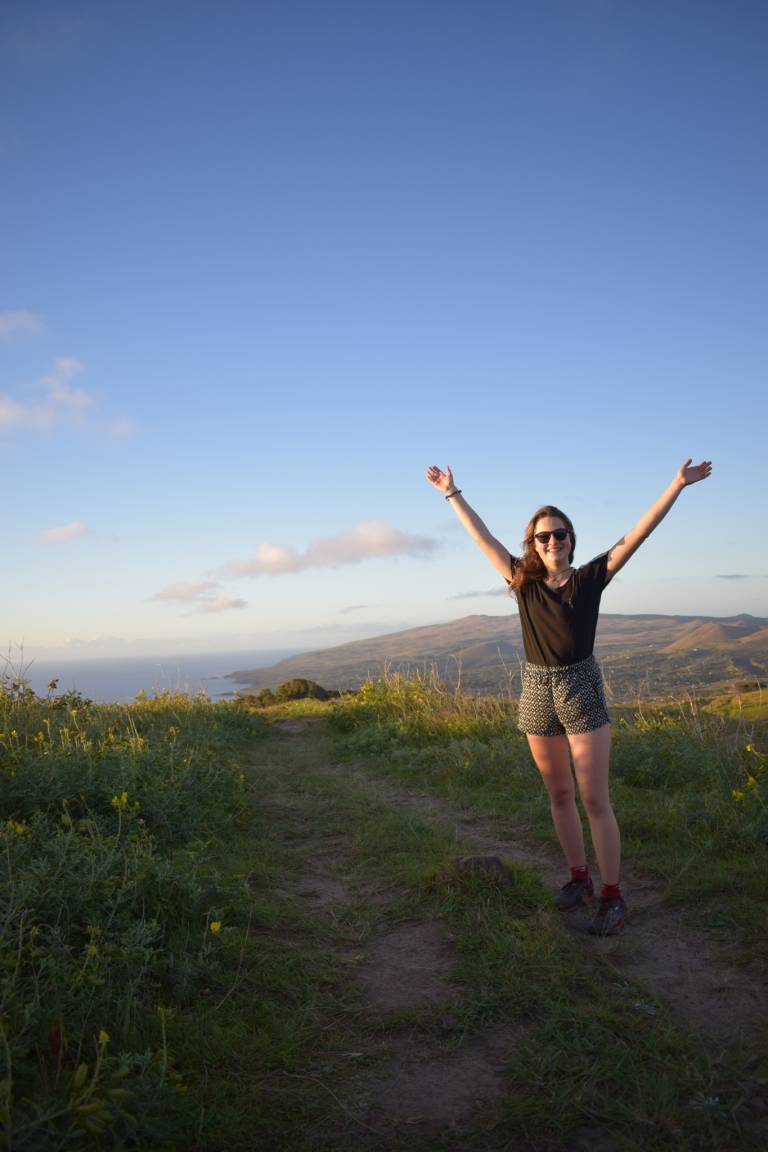Dissertation Research on Easter Island
20 March 2019
At the end of her year abroad in Chile, Marine from Arts and Sciences spent some time on Easter Island in order to conduct research for her final year dissertation.

Marine Deroy, Arts and Sciences
After flying for five hours over the infinite blue Pacific Ocean, we finally landed on the beautiful island of Rapa Nui, also known as Easter Island.
It is only on the island that I realised the heavy colonial significance that this international pseudonym had. It is a reminder of the Dutch explorer’s “discovery” of the island on Easter day in 1722. Ever since, colonial influence and globalisation has left its mark on one of the world’s most remote places. Indeed, the first thing I saw when stepping outside of Latam’s plane was the imposing Chilean flag proudly floating in the airport.

This political patriotic symbol contrasted with the warm welcome tourists received, crowned by necklaces made out of flowers given by the locals. The incredible culture around the 900 moai statues, averaging four meters high and weighting 13 tons were carved out of porous rock formed by consolidated volcanic ash, makes this place so unique. The families believed that they held a protecting power. It is unknown how they were moved around the island but many support the idea that Rapa Nui cut down native trees for logs to roll the statues from their quarries to their overlook positions. Competition among clans led to ever bigger moai and, ultimately, to the destruction of the forest. Natural disasters such as hurricanes, volcanic eruptions and tsunamis also had devastating effects on the island. When the European arrived during the 19th century, they enslaved the population, estimated to have been around 2,000 people, and spread small pox leaving almost no survivors. Now the island has 10,000 inhabitants and lives off of tourism. It is hard to see how this island is Chilean (annexed in 1888) when you are so far away from the continent and the stressful life of Santiago. I pursued this theme through different interviews of Chileans and native Rapa Nui.
While waiting for our suitcases on the airport’s single conveyor belt, we realised we weren’t completely cut out from the world and to my surprise a small TV screen was showing live world cup matches. We also had access to slow Wi-Fi on our campsite. After talking to a Chilean who has been working for more than a year as a truck driver, he explained how the island was very dependent on tourism, the Chilean government’s financial aid and exportations of commodities and goods. This was also confirmed by the half Rapa Nui half Chilean woman working on the camping site where we stayed. Today, there is no turning back to the way natives used to live hundreds of years ago. She explained that the residents of the island realised this and that is why the autonomous movement isn’t as active as it used to be in 2010 for example. Nevertheless, it was hard to ignore the violent protestation signs against the current right wing government opposite our camping site. The five star hotel was built on the land owned by a Rapa Nui family who’s ancestor exchanged it to a foreigner without monetary compensation. Today the family claims that this land has been stolen from them and demand for its return.

Dissatisfaction against Chilean domination was also expressed when interviewing three Rapa Nui. They felt overwhelmed by the 10,000 people living on the island of which 2/3 are immigrants largely from Chile and the rest from Peru, Haiti and Tahiti. Hence, they were very happy about the new voted law which will limit by August 2018 Chilean immigration. They will now require a working permit in order to stay on the island.
In a nutshell, all the individuals I talked to encouraged tourism. Some of them saw Chilean presence in a better light than others. However, as noted, Rapa Nui is now a part of the globalisation process and cannot deny the essential help they receive from the government such as free education on the continent or subsidies on gas. In addition, as medical assistance is very basic on the island, locals go at least once a year to Santiago for a medical check-up and have reductions on their flight tickets as well as the food they buy from the supermarket on the island while tourists pay three times the price they pay. The government is also increasingly aware of the human impact on the island’s biodiversity. To protect it, the government created the world’s biggest marine national park in 2017. Hence, from what I observed, Chileans seem to have settled into the island although they are aware that they must respect the native culture and seem to be careful not to boast about their Chilean nationality, even though natives are also Chilean. The Rapa Nui native language is still spoken but natives have also adopted Chilean slang and expressions bridging both cultures.
 Close
Close

